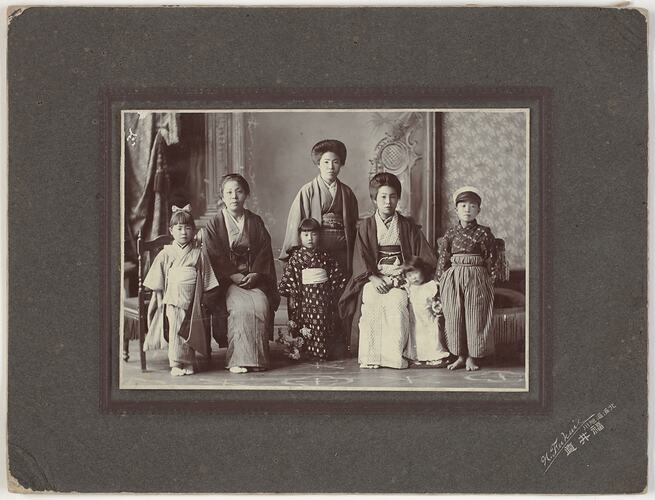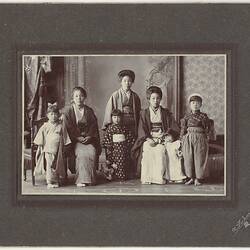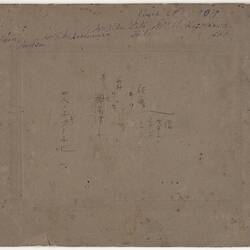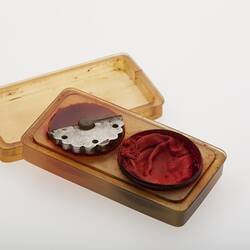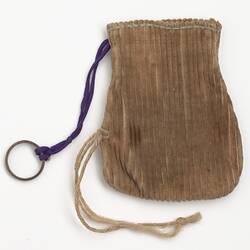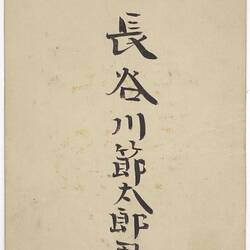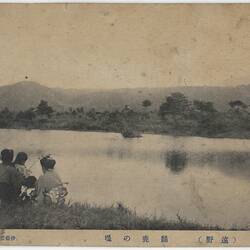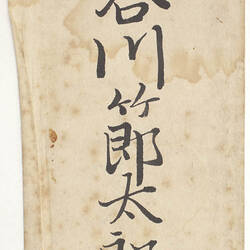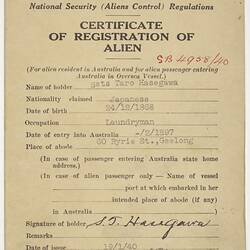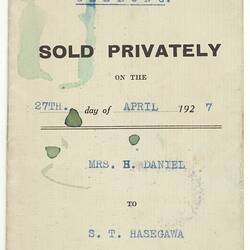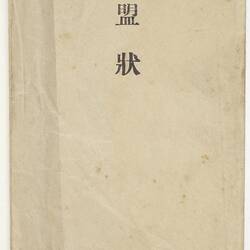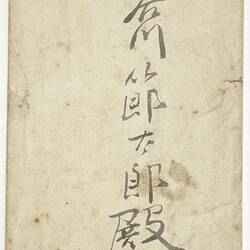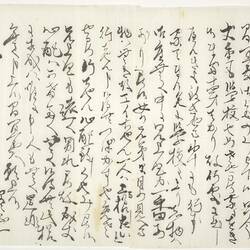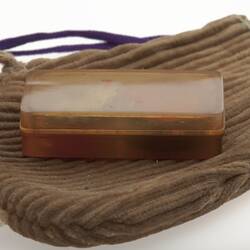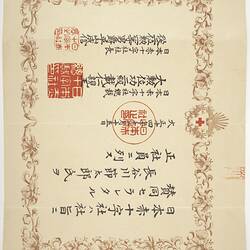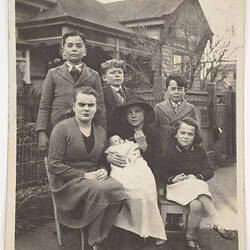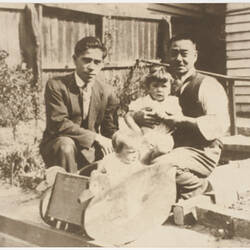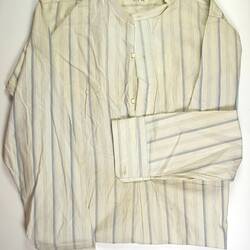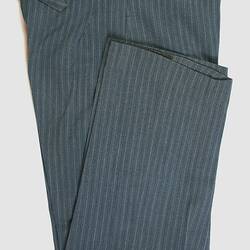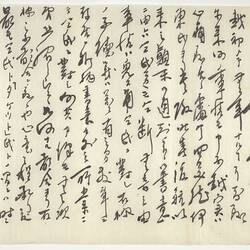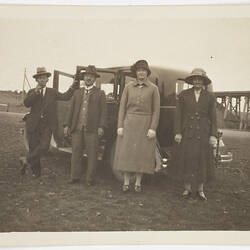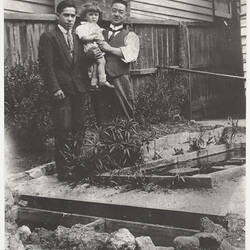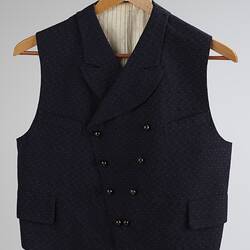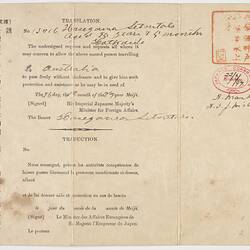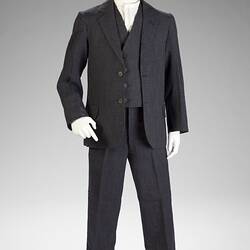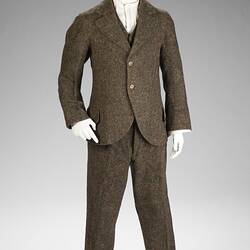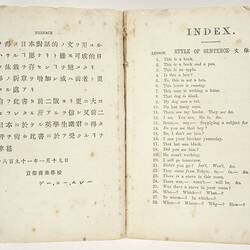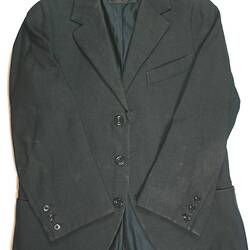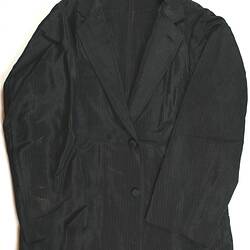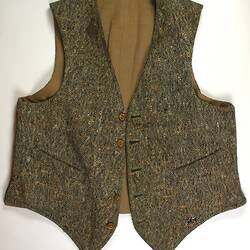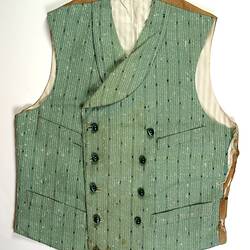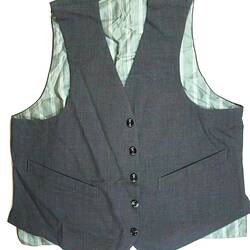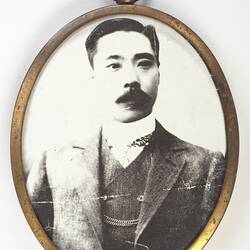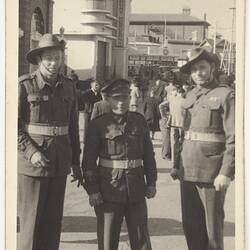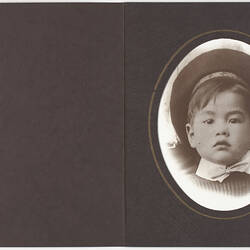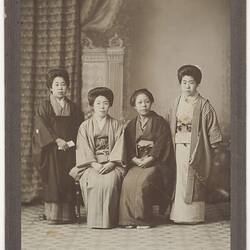Summary
Digital photograph of Setsutaro Hasegawa's extended family taken in Sapporo, Japan circa 1909. It would have been sent out to him after his arrival in Australia. Setsutaro migrated to Australia from Japan in 1897 at the age of 26, just four years before the introduction of the Immigration Restriction Act which severely limited migration to Australia from countries in Asia. He established a laundry business in Geelong and by 1911 he had married an Australian-born woman and had three children.
In 1941 Setsutaro was arrested as an enemy alien and sent to Tatura internment camp in northern Victoria. Released early in 1943 due to his age and poor health, unlike most Japanese interns he was not deported to Japan after the War. Setsutaro remained in Geelong for the rest of his life and died in 1952.
Description of Content
Studio portrait of seven members of Setsutaro Hasegawa's extended family. The three children (two girls and one boys) and woman in the centre of the photograph stand, while the two women on the sides stand. They are all wearing traditional dress. The people depicted in the photograph, from right to left are: Shin, Mitsu, Mrs Riki Nishummra, Mrs Kiku Sato, Hide, Mrs M Hasegawa and Sada.
Physical Description
Black and white photograph
Significance
The Hasegawa collection enables the exploration of a number of important historical themes relating to migration, working life, and wartime internment in Victoria. Late nineteenth century and early to mid twentieth century Japanese migration and settlement experiences are little represented in the museum's collections and this collection of clothing, documents, personal items and photographs helps to redress.
More Information
-
Collecting Areas
-
Acquisition Information
Donation from Andrew Hasegawa, 08 Oct 2009
-
Place & Date Depicted
-
User
-
Individuals Identified
Shin; Mitsu; Mrs Riki Nishummra; Mrs Kiku Sato; Hide; Mrs M Hasegawa; Sada
-
Format
Digital file, Black & White
-
Inscriptions
Written on the bottom of the image: 'N. Fukui', along with some Japanese characters.
-
Classification
-
Category
-
Discipline
-
Type of item
-
Dimensions
139 mm (Width), 95 mm (Height)
Photograph dimensions
-
Keywords
Families, Japanese Communities, Japanese Immigration, Photography, Portraits, Traditional Costumes
